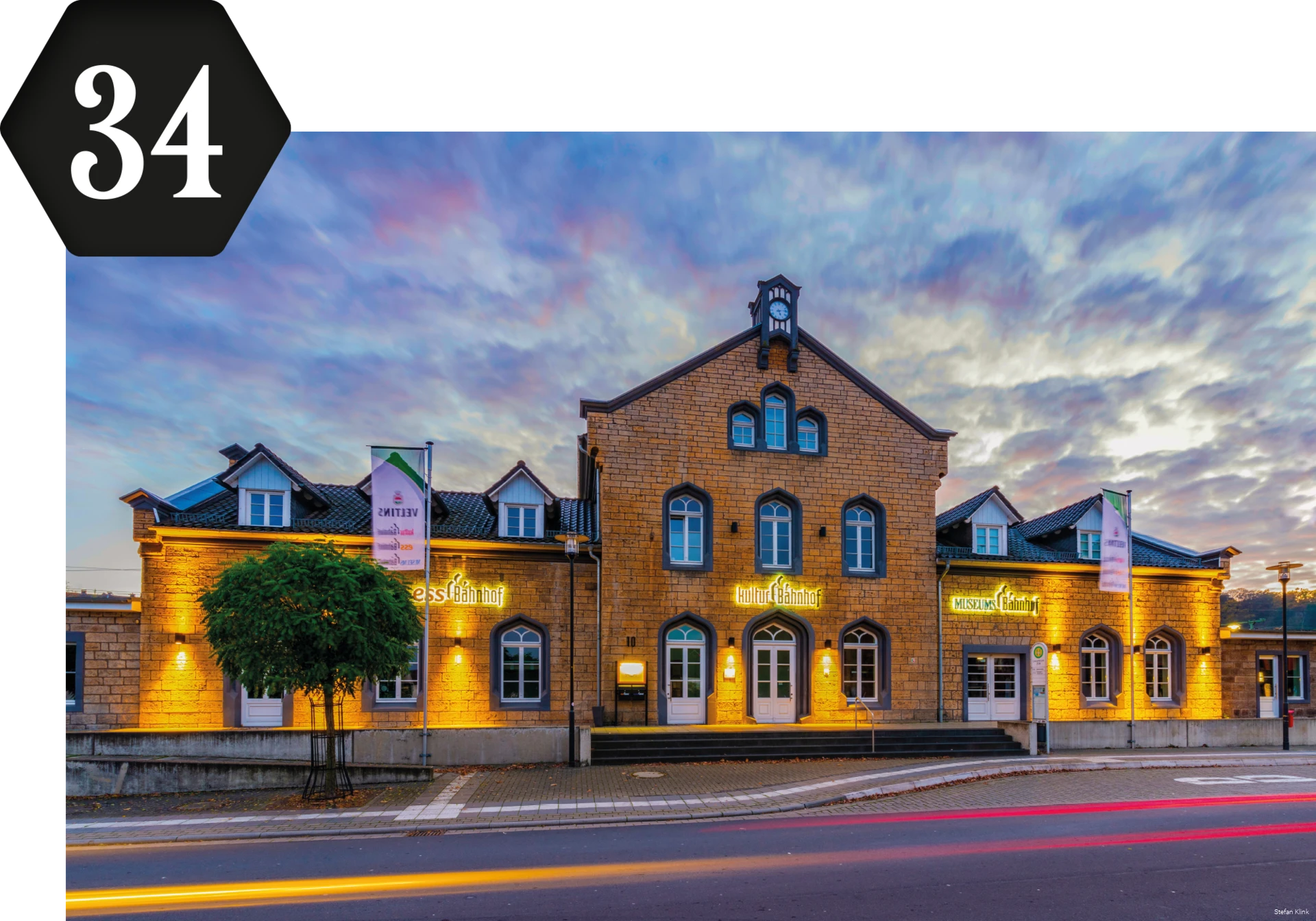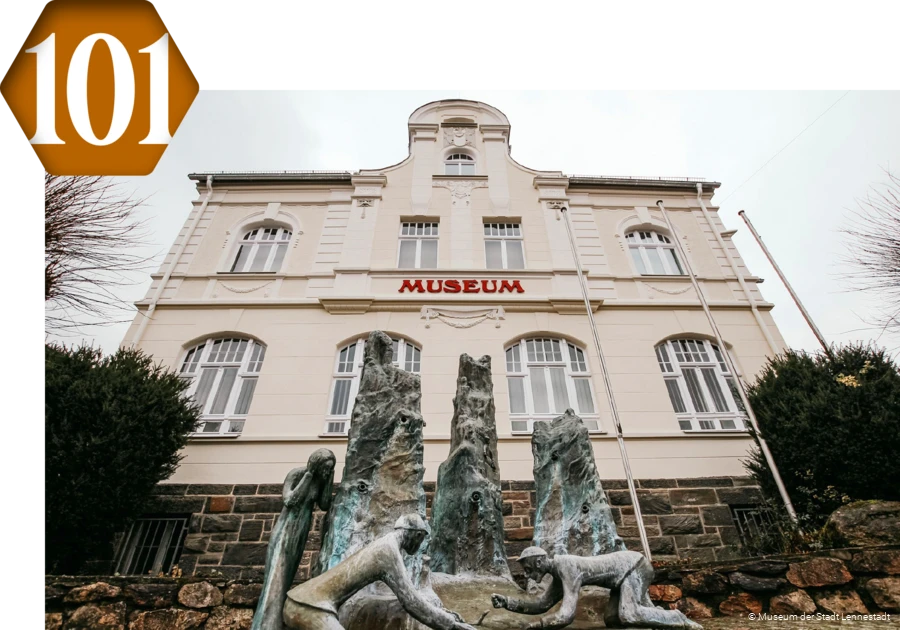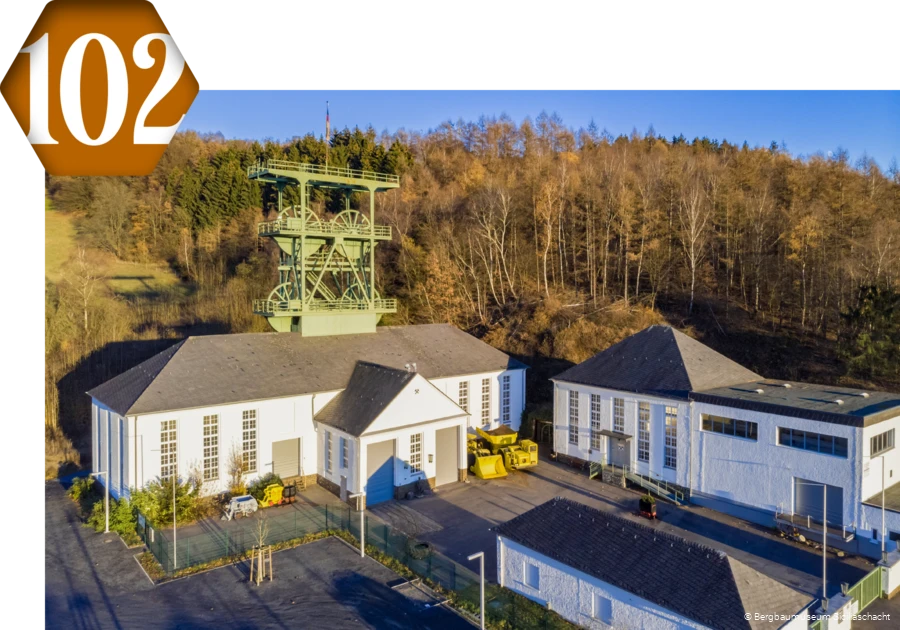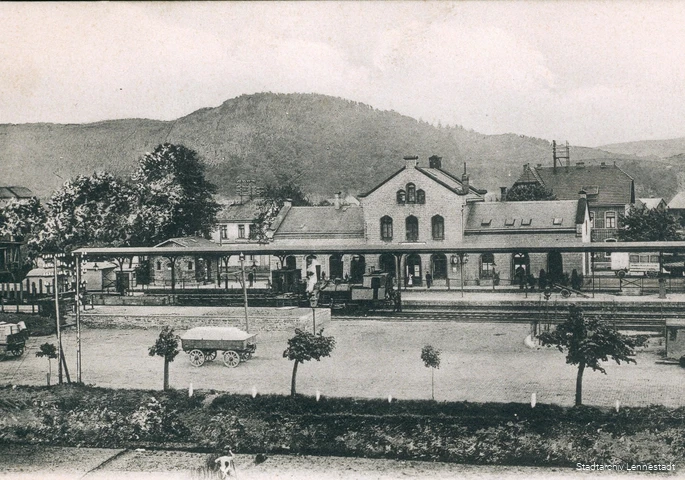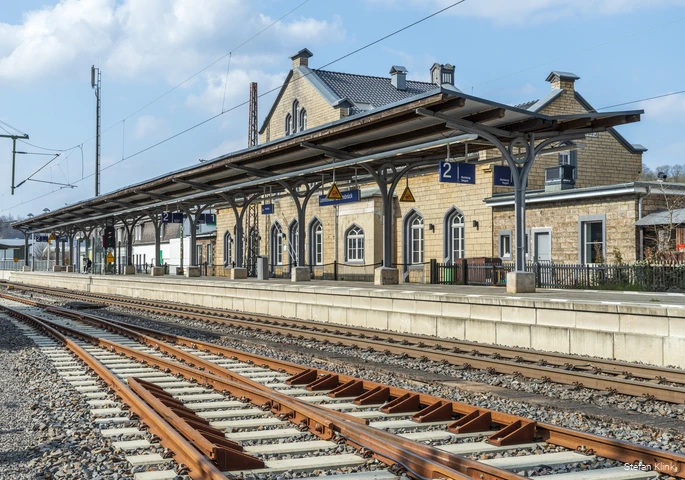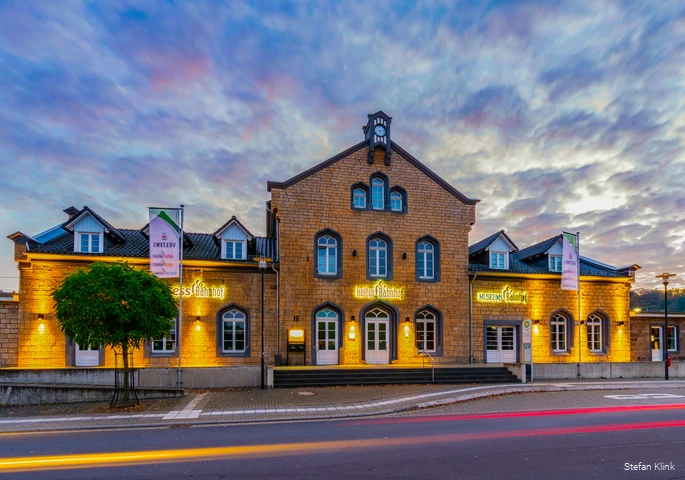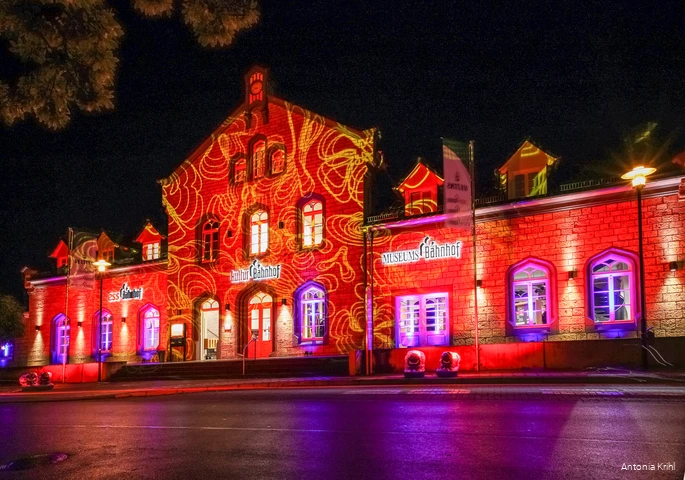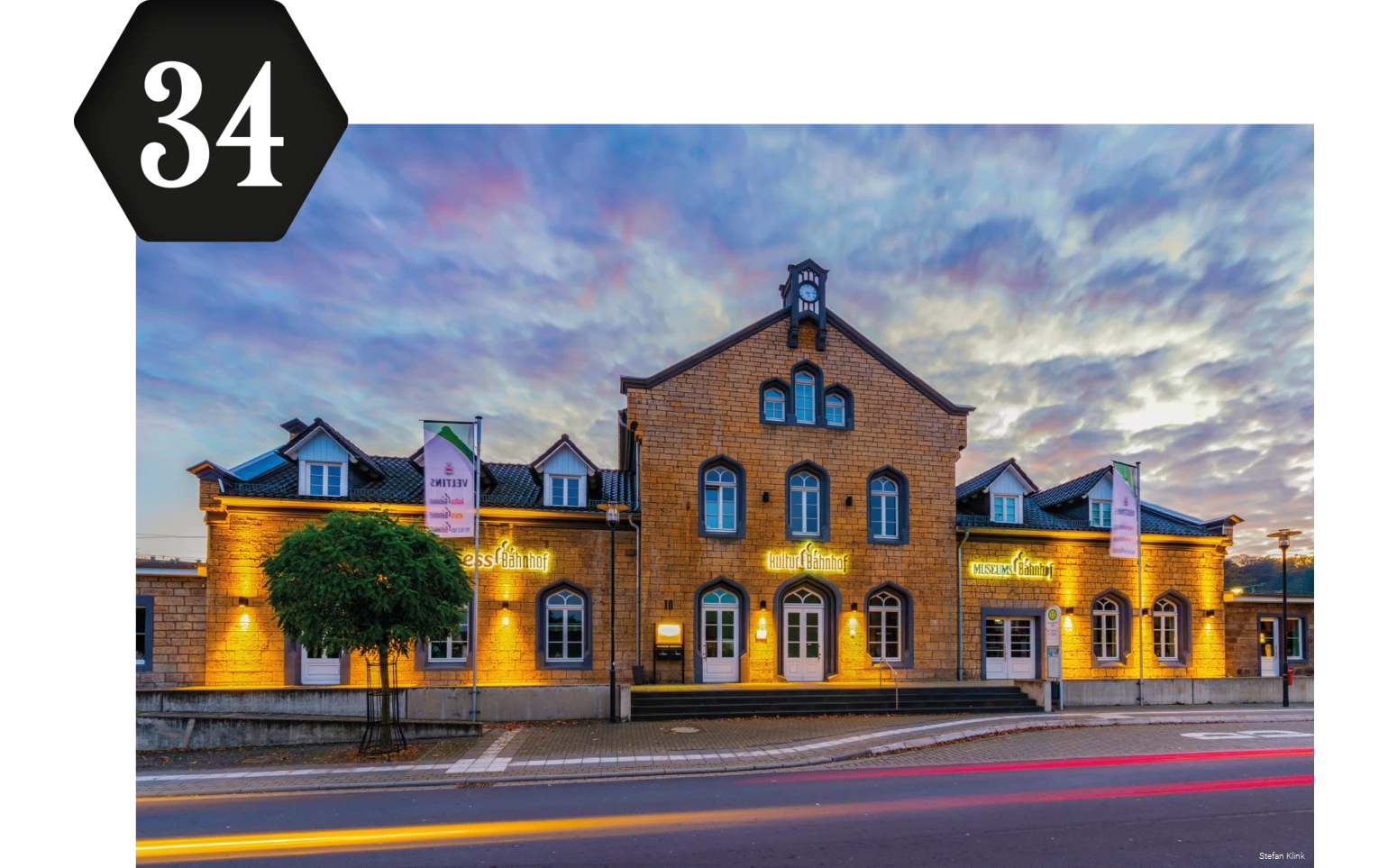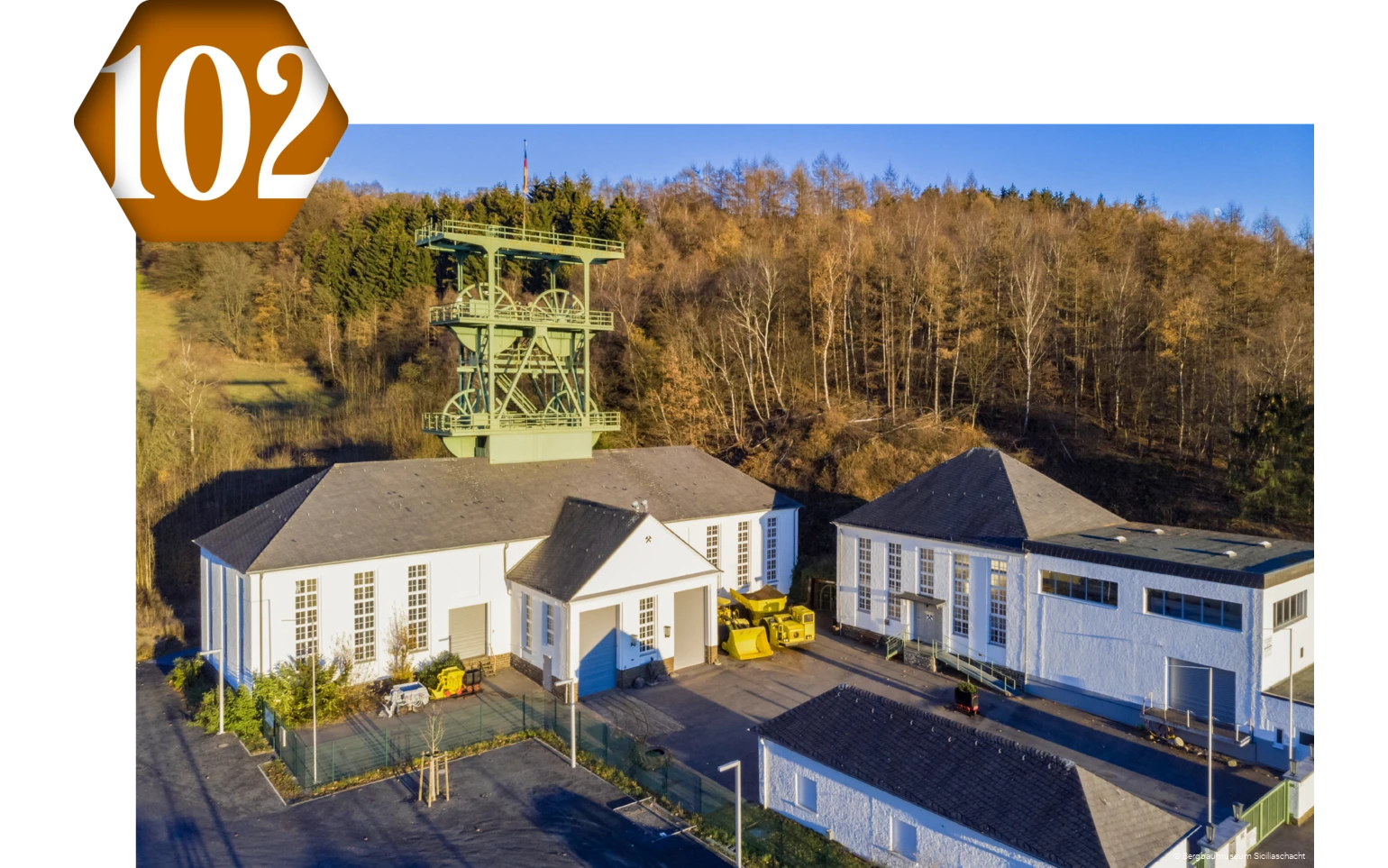Grevenbrück station [around 1910]
KulturBahnhof Grevenbrück
The station façade of Grevenbrück in English Tudor style gives you an idea: A lot of money was once earned here - thanks to the railroad. For it was only the construction of the Ruhr-Sieg line and the connection to the Ruhr area that made it possible to mine the rich raw material deposits in neighboring Meggen - above all sulfur gravel - on an industrial scale. The Siciliaschacht mining museum also bears witness to this ...
- Infotext read more
-
… The booming Meggen pyrite mines – as early as 1865, the quantity shipped in Grevenbrück is 35,000 tonnes – attract other industries: a chemical plant, with its sulphuric acid being processed by a dynamite factory also founded on site, and a limestone works still in operation nowadays. The most significant impact on industrial development, however, comes from the Sachtleben Group in Duisburg-Homberg.
Around 1900, the chemist Rudolf Sachtleben develops a procedure that uses previously unworkable residues from pyrites processing for the production of the white pigment lithopone. This means a significant boost for the mining industry in Meggen. Even before that, the 175 ore mines had merged to form mining associations. The largest of them, Siegena and Sicilia, use their own siding as of 1869, leading from Altenhundem on the Ruhr-Sieg railway to Meggen. It replaces the costly and cumbersome horse-drawn carts hitherto shouldering the ore transport to the station in Grevenbrück. Sachtleben's Duisburg company, which has been maintaining business relations with Meggen since 1892, acquires a majority stake in the Siegena and Sicilia associations in 1906 and expands the mines involved into the world's most important pyrites and barite mines. Part of the production regularly goes by rail to the Sachtleben works in Duisburg-Homberg - Meggen gets its own cargo terminal as early as 1911.
In the 1950s, the 573-metre-deep Sicilia shaft starts operating. It produces up to 5,000 tonnes per day. A new processing plant allows for the enrichment of concentrated zinc and lead, which yields significantly higher profits than pyrites, which suffer a sharp drop in the world market price. However, the zinc content of the extracted ores dwindles the deeper they are mined and to such an extent that mining is discontinued in 1992. As a result, the Meggen railway station loses its function as well and is subsequently dismantled. The Grevenbrück railway station building, which became a listed monument in 1991, now houses the so-called Kulturbahnhof.
Steel Time Travel Destinations Nearby
The "Steel Time Travelers" Luise & Alfred: KulturBahnhof Grevenbrück
Lu:
All out! Grevenbrück. Grevenbrück here! Come Al - you will make eyes! ...
- Full dialog text
-
Lu: All out! Grevenbrück. Grevenbrück here! Come Al - you'll make eyes there!
Al: Aren't we going all the way to Siegen? What is there to see here but untamed natural wilderness?
Lu: A castle for the railroad! Just the way you like it. A small cathedral of architecture for progress and traffic ...
Al: Well, yes - it seems "very British" to me. Always this Tudor style, even here in Sauerland. Do we have to copy everything these Englishmen do?
Lu: Give me a break - if you look at it closely, this rail line also connects the Lenne towns with England and the whole world. Natural resources by express!
Al: And the newly rich country people receive in return manners, culture, discoveries from this brave new world ...
Lu: That's what the right man says - arrogant snob. I'm hungry now - it's already pinching my stomach - high time for a meal and some more harmonious sounds.
Al: Machine sounds? That's my music!
Visitor information
Address:
KulturBahnhof
Bahnhofsplatz 10
57368 Lennestadt
Phone: 02723/608401
www.kulturbahnhof-lennestadt.de
kulturbahnhof@lennestadt.de
Opening hours exhibition:
Every first Sunday of the month: 2 p.m. - 5 p.m.
Opening hours restaurant EssBahnhof:
Wed– Sat: 5.30 p.m. – 10:30 p.m.
Sun: 4 – 9 p.m.
![]()
![]()
![]()
![]()
